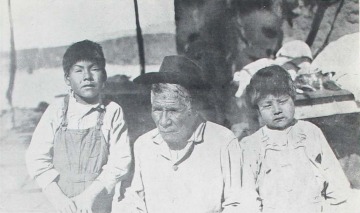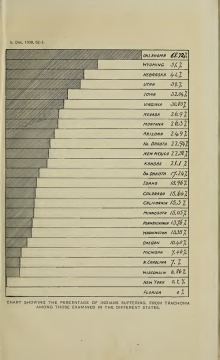1912: Trachoma poses blindness risk in the West
A U.S. Public Health Service study finds that 22.7 percent of Native Americans, roughly 72,000 people, have the eye disease trachoma. The infection rate is as high as one-third of Indians on reservations in Nevada, Utah, and Wyoming, and one-half of Indian students in some boarding schools. Untreated, trachoma will progress to blindness.
Trachoma is an infection of the eye, which starts as pink eye and worsens to cloud the cornea, causing swelling and discharge.
- Theme
- Epidemics
- Region
- Arctic, California, Great Basin, Great Plains, Northeast, Northwest Coast, Plateau, Southeast, Southwest, Subarctic

